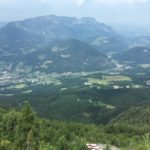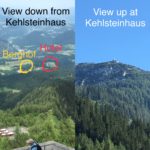Get the Details Correct or Lose its Value
Pay attention to details. The most important things are often overlooked in the search for things than the obvious. —Unknown
No matter how you phrase the axiom, the devil really is in the details. Military members at all levels must be able to digest information (tactical, operational, strategic, or policy levels) and communicate the reasons for its importance to others up/down/lateral the chain of command. How a message is crafted, what the message states, and the importance of making the correct decision are vital personnel who need authority to complete actions. In time critical environments, communication information correctly with the correct and appropriate level of details is vital.
Military culture does not mentor nor instruct its members how to communicate appropriately. For an organization that prides itself in all the methods to communicate to each other, the overall performance is rather piss-pour. Most people sit through countless professional military education courses or take their public speaking course for their 4-year degree thinking they have mastered how to communicate inside (or outside) their organization. That education gives a false sense of security as most military members are never taught how to communicate up the chain of command to the General Officer / Flag Officer (GOFO) level.
In my 18.5 year military career, the most challenging and rewarding assignment was working at HQ USEUCOM J3. The biggest lesson learned during that 3.5 year assignment was how to appropriately communicate information to the appropriate level of leadership. Sounds easy, but it is more difficult than one can imagine with the first step to success is to realize that you really do not know how to communicate to others. One must adapt their skills to the appropriate levels and ensure information is transmitted in a medium and language the receiver will understand creating a bridge to pass along the important information.
There are many lessons to learn from the topic of communications as others will be covered in other essays. For this discussion though, I want to focus on details in communication. Details can change a story, email, or presentation communicated to someone else in such a way that the story’s lessons are lost or accepted in a way that was opposite of the intent.
——
Berchtesgaden is a small Bavarian city located in the far southeast corner of Germany. It is truly a beautiful city at the base of the Alps along the border with Austria where a visitor can experience Bavarian food and culture. My spouse and I travel here every Christmas and enjoy 3 or 4 days unplugged from our lives and sharing the cultural experiences.
This area though is known for its historical background: Adolf Hitler’s home. Actually, Herr Hitler did not live in the village, but resided in an area above the town in the hills called the Obersalzberg. This would be the place Herr Hitler would spend more time than any other location during his time as Führer where he would make political and military decisions for the Reich. Guests who Herr Hitler personally greeted on the steps included David Lloyd George, Neville, Chamberlin, Benito Mussolini, and the Duke and Duchess of Windsor. This residence was in the center of a security zone called Führersperrgebiet (The Führer’s autonomous area) that included residences for Hermann Göring, Martin Bormann, and Albert Speer.
Built as mountain chalet, Herr Hitler purchased the location in 1933 from the funds Mein Kampf had generated and within two years, the location would be fully renovated and expanded to be a presentation of the glory and power of the Führer. The interior was supposed to be grand, Alpine influenced, and aligned with Herr Hitler’s artistic background, but many interior designers question the taste levels. The views from the terrace or through the Great Hall window were surely the highlight of the location as the Obersalzberg was truly the beautiful setting that established the atmosphere Herr Hitler desired.
——
When explaining to people where we spend our Christmas seasons to Americans serving overseas, I begin by asking folks if they know the location of Hitler’s house. For those who have explored Southern Germany, they have traveled to Obersalzberg for the history lesson. “Yeah the Eagle’s Nest has some great views,” said one respondent. This person like 96% of the others respond with their experiences taking the bus up the winding road to the Eagle’s Nest known to the Germans as the Kehlsteinhaus. At an elevation of 6017 feet (1834 meters), the Kehlsteinhaus has impressive views into Austria and over the Berchtesgaden valley as it can be seen from anywhere in the valley.
Following the bus ride, a large tunnel entrances greets visitors and with a 3 minute walk down the tunnel a large elevator awaits to take visitors up the final hundred feet. Inside the elevator, polished brass, Venetian mirrors, and green leather display Bavarian opulence for the Reichsführer, but Herr Hitler was always skeptical of the elevators safety and rarely used it. At the top, Kehlsteinhaus is designed similar to those Nazi Reich buildings that could be found in Berlin, but with a heavy influence of Alpine lifestyle. The highlight is the red Italian marble fireplace Benito Mussolini presented to Herr Hitler; today one can see the graffiti from U.S. soldiers following the location’s capture.
Kehlsteinhaus escaped British bombers failed attacks in April 1945. It has survived and is currently owned and operated by a charitable trust.
——
Details.
The two previous sections describe two different locations, but you as the reader may have interpreted them to be the same. What many people think is Hiter’s Residence, Kehlsteinhaus, is actually not his residence; in fact, the Nazi Party paid $30 million to be a diplomatic gathering place starting in 1939. Everyone knows about the Eagle’s Nest because it has been captured in military history through film and stories, plus it is one of the only Nazi-era buildings left untouched following the war. It is easy for the mind to gravitate towards the Eagle’s Nest, but as a friendly reminder: it never functioned as a Headquarters. Hitler’s residence did though.
In Band of Brothers it is mentioned as one of the crown jewels of the Reich, but in all honesty it was more decorative than functional. Hitler’s residence though was the jewel in that crown.
https://www.youtube.com/watch?v=NBqH75Ki2uE
The Berghof, as mentioned in the first description, was Hitler’s Residence. If you try to find the Berghof today, you will only find remnants of the foundation and the retaining wall. On 25 April 1945, British bombers successfully struck the Berghof with the SS lighting fire to the residence a few days later after their evacuation. U.S. and French troops arrived at the Berghof around 4 May and pillaged the items in the house including the famous “Hitler’s Globe” which still survives today. In 1952, the Bavarian government destroyed the shell of the Berghof and was reduced to the foundation.
Subtle details in this story and how they are either disclosed or not can fundamentally change the perceptions the viewer or reader. With Kehlsteinhaus and Berghof, there are two very different locations that through time have become one; therefore, both stories lose the importance of the message.
With the story of the Berghof is the story of impermanence. Even though it was the center of the Third Reich, nothing remains today. You can visit the Berghof today; one just has to pay attention to the details to find it. Unlike Kehlsteinhaus, the Berghof remains are on the side of the hill and are now overgrown with trees. There is a sign to visitors mentioning the location and the historical significance. One would never know though unless they were looking for the Berghof that the foundation still existed. Because of this, people never get to fully understand how Western society has thrown on the dustbin of history National Socialism (aka Nazism).
Every time we visit the Obersalzberg for Christmas, I walk around the former Security Zone and think about the historical activities and importance of the location. This year, the theme that came to mind was, as mentioned, impermanence: all the pomp and circumstance and to be the center of an Empire all reduced to a bunch of trees; the devil in the details. One would never get that message if they visit Kehlsteinhaus instead a clarification in the details would appropriately relay that message to its visitors. Being tough on history allows us to remember the lessons that need to be remembered.
Mark Felton has a great video on YouTube that he explains the history of the Berghof; highly recommend this video before you take your first trip to Berchtesgaden.
——————
Pred is a 18 year active duty Air Force Officer who has served in multiple capacities during this time. He is an avid music fan (shout out to Songhoy Blues) and is fasciated with the physical, spiritual, and mental connections in how things work.






